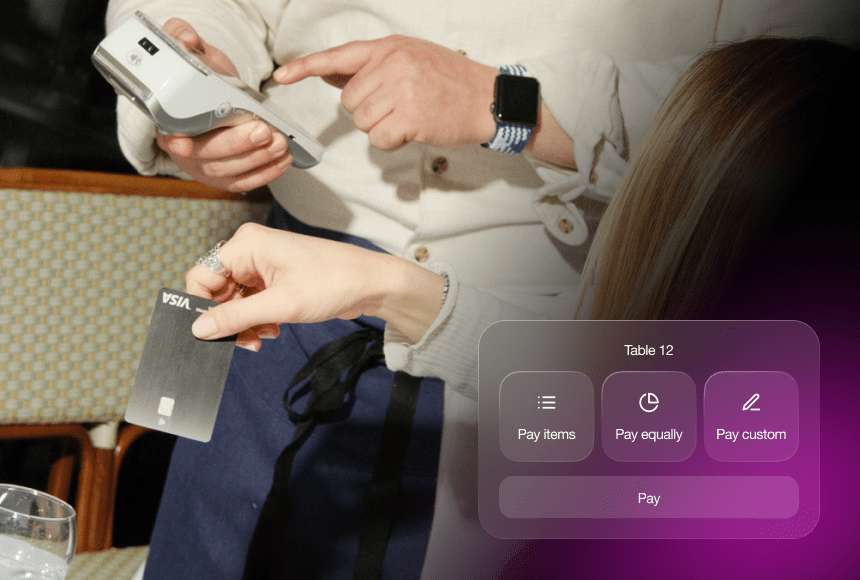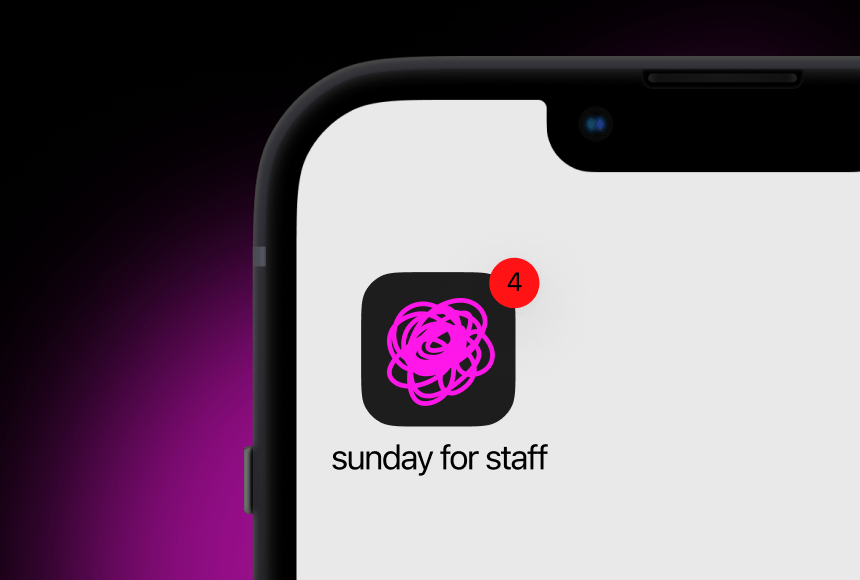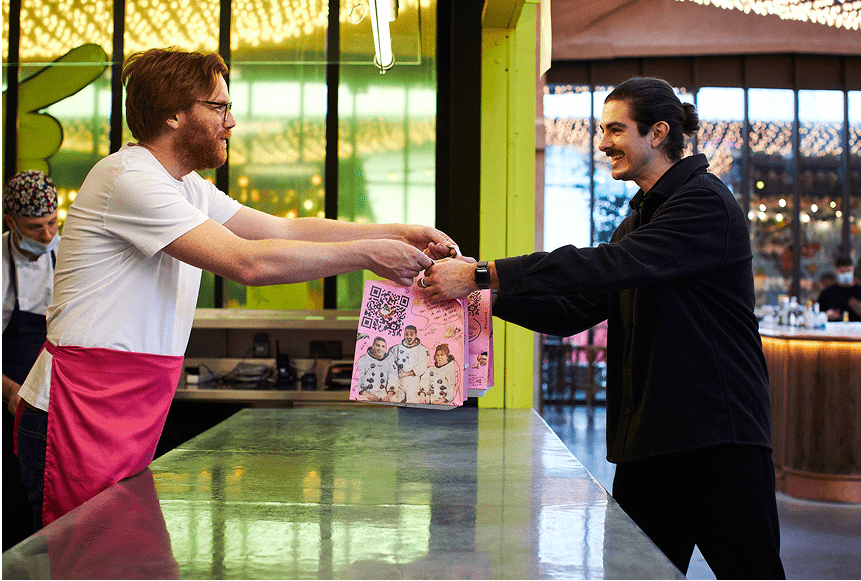
Take Your Dining Service to the Next Level with Digital Bills
Understanding Today’s Dining Dilemma
Picture a bustling restaurant at peak lunchtime: servers juggling multiple orders, guests craning their necks to catch someone’s attention, and a queue of customers waiting impatiently for their bill. Sound familiar? The chorus of complaints over slow service is both a time-honoured tradition and a constant headache for restaurant owners. While culinary excellence remains the hallmark of any successful eatery, the dining experience goes far beyond what arrives on the plate. Moving diners smoothly from arrival to dessert and then to payment is an increasingly vital part of a restaurant’s reputation.
Restaurant culture in the UK has evolved significantly in the past few years, with consumers expecting attentive, efficient service in every aspect of their visit. Online ordering and reservation systems have modernised how we book a table and order food, yet many establishments still rely on outdated methods when it comes to finalising the bill. The contradiction is puzzling: why do we adopt the latest in kitchen technology and streamlined online bookings but drag our feet on the last step—the payment?
That last step is precisely where digital bills come in, offering a convenient way for customers to settle up without having to wave or shout for the bill. By allowing guests to skip the waiting game, digital billing solutions can radically transform the way you run your restaurant. Think fewer frustrated customers, faster table turnover, and a modern experience that aligns with the evolving demands of today’s diners.
The Rise of Digital Bills
Contactless payments, online delivery, and mobile order-ahead have been standard in the takeaway and quick-service sphere for years. Full-service restaurants, however, have long maintained a more “traditional” approach—presenting the paper bill, waiting for a card machine to free up, grabbing the receipt, and processing payment. But as expectations shift towards speed and convenience, the call for digital alternatives grows ever louder.
Indeed, a recent study by UK Finance revealed that in 2022, over half of all payments in the UK were made using contactless methods. This shift is driven partly by younger diners who expect instantaneous service, but it’s also influenced by older guests who have become more comfortable with digital transactions since the pandemic. Offering a digital bill aligns with these new preferences, providing multiple ways to pay—via smartphone, bank app, or contactless card reading—without the server having to hover next to the table during the entire process.
But digital bills extend well beyond convenience. They’re a portal to an entire suite of features, including tip options, personalised offers, and quick customer feedback via platforms like Google Reviews. This all-in-one approach caters to diners’ desire for streamlined interaction and restaurant owners’ need for efficiency and customer retention. For many UK-based restaurateurs, the question is no longer whether to adopt digital billing—it’s how quickly they can implement it to avoid falling behind.
Key Benefits of Digital Bills for Restaurants
From improving staff workflow to boosting your bottom line, digital bills offer a wealth of advantages. Here are a few of the main benefits you can expect when transitioning to a digital billing system:
- Speedier Table Turnover: Every minute counts in the hospitality sector, especially during busy service. Digital bills let your guests settle up quickly and free up tables faster for the next round of customers.
- Reduced Human Error: Manual entry of orders into the payment terminal or confusion over split bills increases the chance of mistakes. By automating these steps, you minimise errors and avoid awkward encounters at checkout.
- Enhanced Customer Satisfaction: With easy, do-it-yourself payment, there’s no more waiting for a card machine. Guests can opt to tip with a simple tap, boosting your staff’s morale while also leaving a good final impression.
- Upselling Opportunities: Depending on your chosen solution, you can include promotional messages or encourage guests to join a loyalty programme before they pay, further increasing revenue and customer loyalty.
- Automated Reviews and Feedback: Some digital solutions prompt diners to leave a Google review immediately after payment. Positive reviews can dramatically lift your online visibility. Equally, real-time feedback helps address any service hiccups before they become major issues.
In essence, going digital isn’t just about making your guests happy; it’s about optimising every aspect of your service. With the right approach, it creates a win-win scenario: guests feel empowered with quick checkout, and your team focuses on what truly matters—providing an excellent overall dining experience.
Real-World Example: One Cosy Bistro’s Upgrade
Allow me to share a snippet of a real scenario I came across while consulting for a small, family-run bistro in London. Tucked away on a quiet side street, the bistro had a loyal lunchtime clientele but struggled with dinner rush turnover. Staff spent far too much time running back and forth with the card machine, and diners often fumbled for cash or waited for receipts. The result? Bottlenecks at prime dining hours, leading to impatient faces and a stressful environment for servers and guests alike.
When the bistro introduced a digital billing solution that connected directly to their existing point-of-sale system, the transformation was almost immediate. Diners were invited to scan a QR code at their table to see the itemised bill on their phone. Payment could be made with Apple Pay, Google Pay, or a straightforward link to their banking app. The chaotic scenes dissipated, replaced with relaxed conversation as diners closed out their bills at their own pace. Table turnover increased by nearly 20%, staff reported fewer last-minute payment sprints, and the restaurant even saw a small but significant uptick in tipping percentages—most likely because the digital interface suggested predefined tip options.
What’s more, the bistro introduced a post-payment nudge that invited diners to leave a review on Google. Over the following few months, online ratings soared, drawing more foot traffic, especially from visitors who discovered the restaurant through its enhanced online presence. This cosy bistro exemplifies the knock-on effect of digital bills: the efficiency gains at the end of the meal can ripple out to almost every facet of your business.
The Nuts and Bolts of Digital Billing Solutions
At the most fundamental level, digital billing solutions require two main elements: a point-of-sale system that can generate electronic receipts and a method for guests to access their bill on a personal device. This usually takes the form of a QR code printed on a table display or on the paper menu. When customers scan the code, they’re directed to a secure webpage showing an itemised bill. Here, they can settle up by card or a range of mobile payment options.
The solution often integrates directly with your existing restaurant software, ensuring accurate totals, taxes, and discounts. You simply need a stable internet connection and a device (phone, tablet, or computer) to manage the back end of the system. To keep costs in check, you can often pay a monthly subscription fee or a small transaction percentage to the provider, as opposed to investing heavily in brand-new hardware.
Why is this relevant to you as a restaurant owner? Because each establishment is unique, and your needs may differ from the brasserie next door or the pizzeria down the street. Some solutions, such as sunday, bundle digital billing with other features like table-side ordering, tip calculations, and review prompts. The trick is finding a solution that meshes seamlessly with the way you already operate—without burying you under complicated setups or training sessions.
Transforming Diners into Enthusiasts
While speed and convenience are top priorities in the payment process, the true secret sauce of digital bills lies in the guest experience. Instead of ending the meal on a frazzled note—searching for wallets, waiting for the server to return with the card machine, or anxiously doing mental maths for the tip—diners get a frictionless, intuitive finale.
By making the payment journey as easy and personable as the rest of the meal, your restaurant stands out. This enhanced experience encourages repeat visits and positive word-of-mouth, which are both essential in a competitive market. Additionally, digital bills are a handy tool to enhance your brand in subtle ways. The bill page can be customised with your restaurant’s logo or a friendly parting message, reinforcing your brand identity one final time before guests leave.
And while the main focus may be on utility, unexpected details can go a long way. Perhaps you add a short note inviting diners to see upcoming events or special tasting nights. Or you sprinkle in a playful culinary pun—so long as it fits your restaurant’s personality. In short, digital bills give you one last chance to create a sense of connection with your guests.
Overcoming Implementation Challenges
Transitioning to any new system can be intimidating, especially if you’re concerned about training staff and dealing with unforeseen hiccups. Yet implementing digital bills doesn’t have to be a messy affair. In fact, many restaurant owners find that the learning curve is surprisingly manageable.
Here are some practical tips to help you navigate potential challenges:
- Gradual Rollout: Start with a few tables or during quieter shifts to ensure everyone is comfortable with the new process. Scale up once staff and diners get the hang of it.
- Educate Your Team: Provide a short training session and a printable quick reference guide. When servers understand digital bills from the inside out, they can confidently answer diners’ questions.
- Communicate Clearly with Guests: Table signage or a small note on the menu can inform customers about the new option. Encourage staff to mention it when handing over menus or seating guests.
- Offer a Parallel Method: Not everyone is equally tech-savvy. Continue offering a traditional payment terminal for those uncomfortable with mobile payments. Over time, watch as more and more guests embrace the digital route.
- Monitor Feedback: Stay open to suggestions from both staff and guests. If diners find it confusing, adjust your signage or add a brief how-to within the digital bill interface. Listening and tweaking will keep the process user-friendly.
The biggest hurdle often lies not in technology but in changing long-established routines. Once your team experiences how much time they save, and once guests try the hassle-free process for themselves, the benefits become crystal clear.
Future Trends: Where Could This Lead?
Digital bills might be the gateway to something even bigger—an entirely cohesive hospitality ecosystem that merges online ordering, hands-free menu updates, and integrated loyalty programmes. Some restaurants already let customers view the menu, place orders, and pay—all from their personal devices. In doing so, they reduce staff overhead and gain valuable data about their patrons’ preferences and spending patterns.
Looking ahead, real-time analytics and personalised marketing could become standard practice. Imagine greeting a returning customer by name, offering their favourite specials, and letting them build loyalty points with each purchase. Digital bills act as both a finishing flourish and a data-collection tool that can inform how you run your business day to day.
Advanced integration could also unlock features like immediate refunds or loyalty redemptions if a customer changes their mind on an order. Everything can be handled with just a few taps, cutting down on complicated managerial tasks. Indeed, the digital wave isn’t slowing down; it’s set to become the default for forward-thinking restaurants.
Serving Up the Next Step
By now, it’s clear that digital bills are more than a passing technological fad. They stand at the intersection of speed, convenience, and an enhanced customer experience—all crucial ingredients for a thriving restaurant in an increasingly competitive sphere. Adopting a system that offers QR code payments, tip management, and automatic review prompts puts you on a path to greater efficiency and a more satisfied clientele.
As a chef depends on fresh, top-quality ingredients to create a memorable dish, you, as a restaurant owner, rely on modern tools to shape your diners’ overall experience—from the moment they walk in to the moment their digital bill is settled. The direction of travel is clear: guests want a smooth, integrated experience, and digital solutions make that possible.
Ultimately, implementing digital bills is not about being flashy or trendy. It’s about making life easier for your staff, meeting diners’ expectations, and future-proofing your business. Whether you run a family-owned bistro or a high-end café, the opportunity to bring it all together—in efficiency, guest satisfaction, and brand visibility—is at your fingertips.
Frequently Asked Questions (FAQ)
1. Do I need to replace my existing POS system to use digital bills?
Not necessarily. Many digital bill providers integrate with the most popular point-of-sale systems. Check with the provider to ensure compatibility, and you’ll likely avoid a complete hardware overhaul.
2. How do digital bills handle split payments among groups?
Most digital solutions allow for seamless bill splitting—each person can scan the same QR code and choose specific items, or the system can divide the total equally. It’s flexible and prevents the dreaded scrabble for change.
3. What if some customers prefer to pay by cash or card machine?
Rest assured, you can still offer a traditional payment terminal or accept cash. Digital billing is an option that speeds things up for those wanting quick, contactless payment. Over time, you may find more guests opting for the digital method.
4. Is adding a tip straightforward through a digital bill?
Yes. When customers open the digital bill, they generally see a prompt allowing them to include a tip percentage or a custom amount with a single tap. This often increases tip frequency and size, as it’s a simpler, more visible process.
5. Are digital bills secure?
Leading solutions use secure payment gateways and encryption measures. As with any payment method, you should ensure the provider meets recognised security standards and integrates with trusted banking systems for maximum data protection.
Find out more today
Drop us your details below and we’ll reach out within the next 24
“Bill please” is a thing of the past.
With our integrated QR codes your customers pay in seconds, straight from their table.




